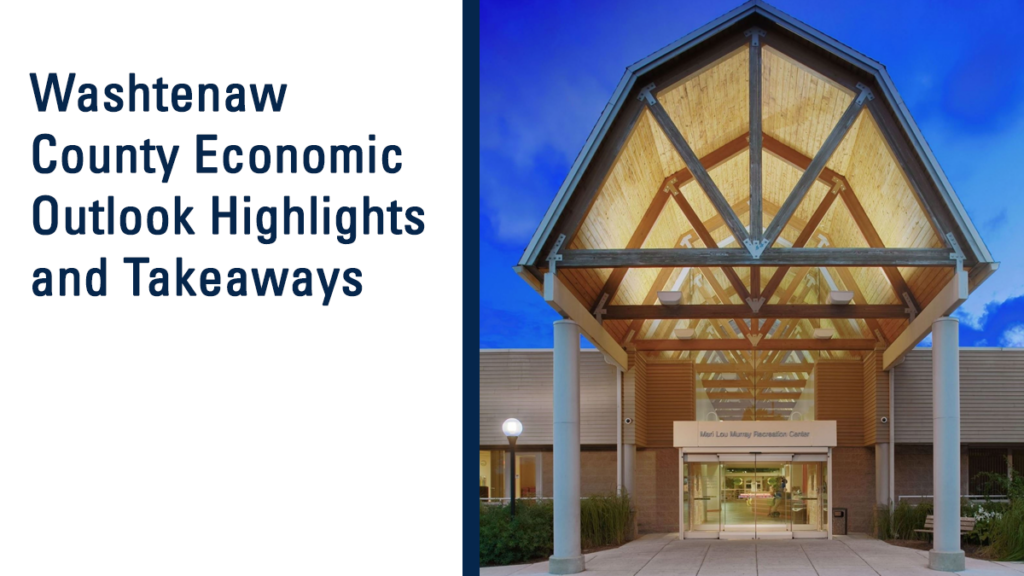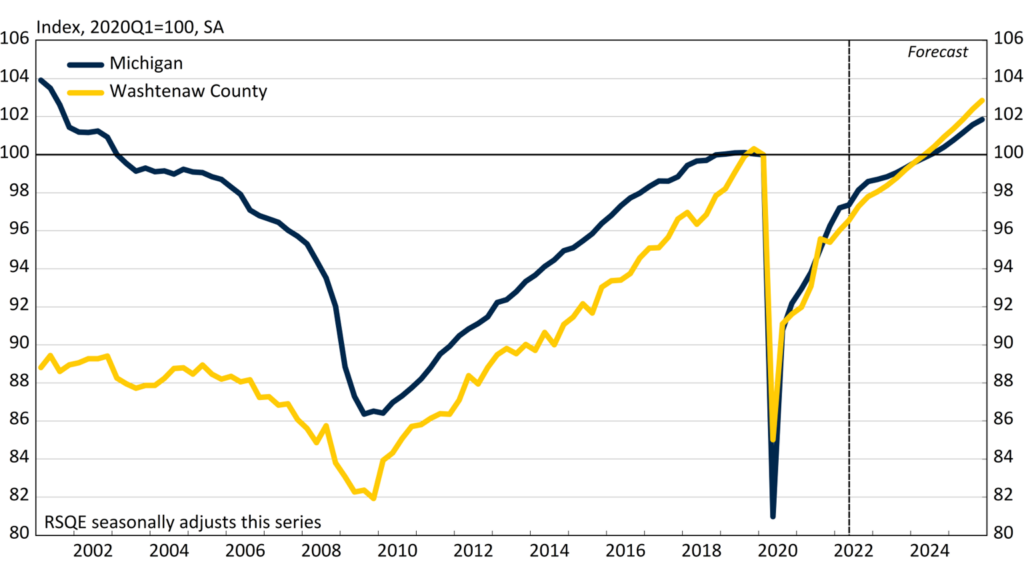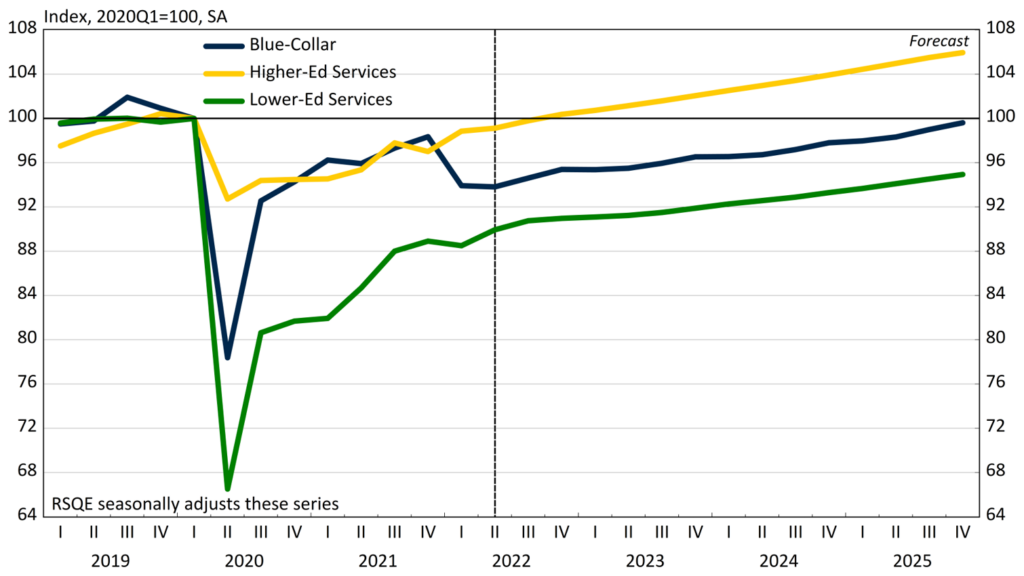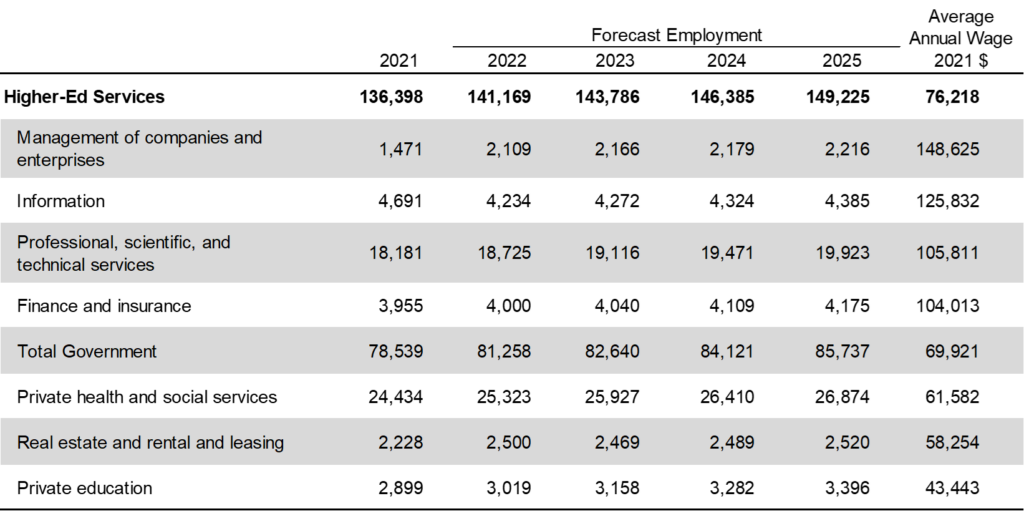
Gabriel Ehrlich and Donald Grimes from the University of Michigan’s Research Seminar in Quantitative Economics(RSQE) presented the economic outlook for Washtenaw County during a luncheon organized by the Washtenaw Economic Club — an event that Ann Arbor SPARK is proud to sponsor. The presentation took place at the newly renovated Morris J. Lawrence Building at Washtenaw Community College in Ann Arbor on March 14, 2023. Ann Arbor SPARK’s Director of Research Melissa Sheldon, who moderated the Q&A session at the event, provided this high-level summary of the Washtenaw County Forecast.
Reflecting on 2022
The RSQE team describes 2022 as a “challenging one for both the national and local economies.” According to U-M’s analysis, “the initial strength and optimism about the pace of the economic recovery gave way to concerns about inflation and the risk of a downturn in the broader economy” as 2022 progressed. Despite the challenging circumstances, Washtenaw County recovered some payroll employment from the depths of the pandemic in early 2022 and payroll employment is now expected to return to its pre-pandemic level in Q2 2024. Growth is anticipated in the county and Washtenaw is expected to outpace the state’s recovery in the next few years.
Quarterly Payroll Employment Indices, Michigan and Washtenaw County

RSQE: March 2023
Michigan’s Automotive Industry
A mild national recession/economic slowdown is expected later this year or in early 2024, but Michigan should be well-supported by the strength of the existing automotive industry. The state as a whole is well-supported by the automotive industry and related manufacturing base, but Washtenaw County is becoming less dependent upon blue-collar industries, including manufacturing. According to RSQE, the local automotive manufacturing industry has been losing jobs for the past several years. In 2002, it employed 14,500 people, but its job count fell all the way to 3,800 by 2021. In 2022, employment fell further to 2,600, but RSQE suspects that decline was due to an establishment reclassification. Despite the growth expected in other sectors within Washtenaw County, the RSQE staff do not expect any recovery over the next three years related to manufacturing which leaves a once local powerhouse industry with only 2,600 employees in 2025.
Job Indices in Washtenaw County by Industry Group

RSQE: March 2023
Post-Pandemic Recovery Remains Mixed
Looking forward, further recovery from the pandemic and growth is expected while some unfortunate circumstances may linger. Service industry jobs lost during the pandemic are not expected to fully recover in Washtenaw County by the end of 2025 (identified by RSQE as the lower educational attainment services group); however, slow and steady growth is anticipated. Labor shortages are expected to continue and “will be an enduring fact of life in Michigan, and especially Washtenaw County, for the foreseeable future.” Inflation remains high in Washtenaw County (8.2 percent) and is expected to slow to 3.2 percent in 2023 and 2.3 percent in 2024 but real wage growth remains stagnant.
A bright spot for Washtenaw County is seen in industries employing highly educated workers. These industries are expected to fully be recovered to their pre-pandemic employment levels by the end of 2022 and employment growth is expected to continue, rising to 6 percent above pre-pandemic levels by the end of 2025.
Higher-Education Attainment Services Industries in Washtenaw County

RSQE: March 2023